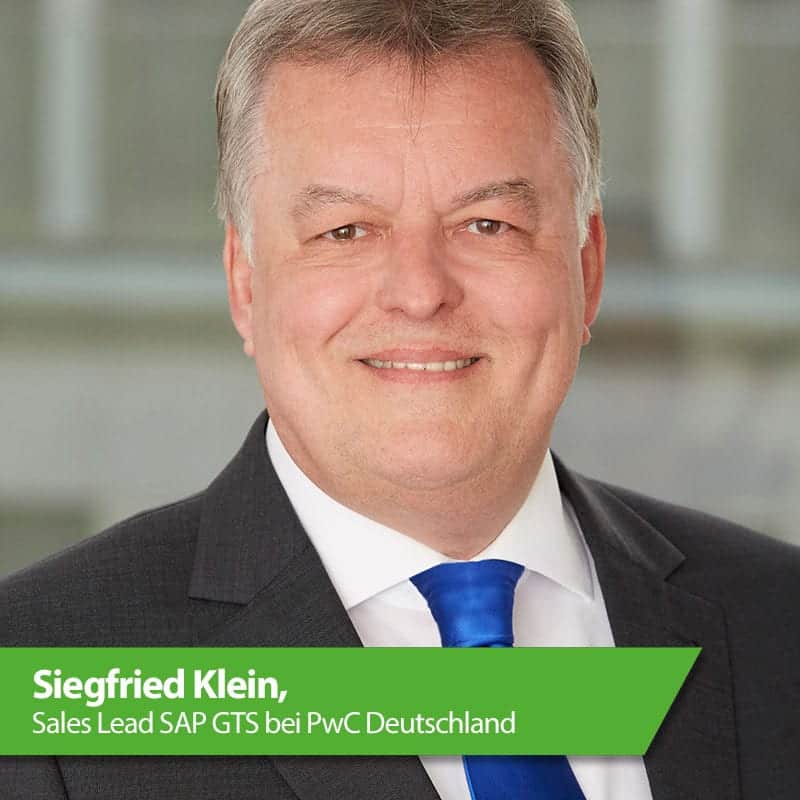SAP GTS - which operator model is the right one?
![[shutterstock: 604127267, Anno]](https://e3mag.com/wp-content/uploads/2020/11/shutterstock_604127267_cmyk.jpg)

Sanction lists, preferential agreements, dual-use goods: the provisions of customs and foreign trade law are complex. There is a great risk of unintentionally and unnoticed violations - and of incurring high fines or putting customs simplifications at risk. Companies are therefore well advised to set up an export control system.
The tasks include checking sanctions and embargo lists and setting up corresponding control structures. Depending on the size of the company and the number of import and export activities, this can present companies with major challenges. With the digital customs and foreign trade software SAP GTS, important processes can be automated.
However, the introduction remains a complex undertaking. This is because it is first necessary to identify which functions and scopes the GTS license must cover. Future requirements should also be kept in mind. Then there is the question of whether the system should be hosted on the company's own servers or in an external data center. In the case of in-house operation, it must be clarified whether the existing servers have the appropriate performance parameters to ensure that all processes run stably. Further challenges lie in interface management and in training the respective users.

In addition, the processes are based on data that changes quickly in customs and foreign trade. For example, customs tariffs, third-country tariff rates, official sanctions lists or preference rules must be regularly obtained via data providers and entered into the system. In order to make products uniquely identifiable for import and export, they must be classified with statistical commodity numbers, which requires appropriate know-how. And last but not least, a communication link to customs and a converter are needed to translate the documents generated in the customs system into the appropriate customs language.
Due to the complexity of the tasks, it is therefore advisable to thoroughly examine the different operator models for GTS - and, if necessary, to call in an external service provider to assist with hosting and operating the software and to be available to answer any questions.
On-premises
Self-operation with full control over the system: The company uses SAP GTS on-premises, i.e. with its own IT infrastructure, and also takes care of the management of the licenses. This gives it full control over the system. It can store data locally and has the entire IT infrastructure in its own hands. However, on-premises operation causes considerable expense.
It must be checked whether the IT infrastructure meets all the requirements for GTS. Data security is also the company's own responsibility. Installation and operation require investments in hardware, licenses and maintenance. License management takes time, because each user needs a license. Updates are also not automatic. The company must maintain the data content itself and continuously update sanctions and embargo lists in the system.
On-premises operation ties up resources in the company's own IT department and beyond. The experts required for this, for example customs and foreign trade specialists or SAP experts, are hard to come by and correspondingly expensive. This poses problems for small and medium-sized companies in particular. In addition, the various tasks and requirements quickly give rise to a large number of contracts with external vendors and service providers, for example for hardware purchasing, system implementation, customs and technical consulting, or data content maintenance.
Bring your own license
Own license, external data center: In this variant, the company provides the GTS license, but pays a service provider to operate it. Depending on the contract, the service provider provides various services - for example, maintenance of the data content or connection to the customs systems. The customer pays a monthly base fee plus additional fees for services rendered. There are then two different options for operating the software: Either it runs in a company's own data center or in a data center of an external provider.
With an external data center, you are tied to a provider and are therefore dependent to a certain extent. In return, it usually offers maximum security as well as the highest performance and availability. The in-house IT department is relieved and can concentrate on its core business. In addition, the resources required in the external data center can usually be scaled flexibly. Overall, external operation offers long-term cost advantages.
On-demand
Only pay for what you use: In this software-as-a-service model, the company purchases software and license in a complete package from an external provider. The company can use all the functions and processes of GTS, but can also select individual or several and thus adapt the scope to its requirements. This model grants the user full cost control.
This is a particular advantage for small and medium-sized companies that only require GTS on a selective basis. They pay a one-time fee for setting up the system, a monthly base amount that covers the costs for system operation, maintenance of the data content and the costs for the EDI connection, i.e. for electronic data exchange. Otherwise, the customer only pays usage-based fees, depending on the number of transactions actually carried out, for example, export registrations made. These are staggered in packages of varying scope, depending on the provider, and include the pro rata license fees.
These conditions are possible because the provider creates several customers on a common system landscape. These are technically separated from each other so that all data is protected and cannot be viewed by others. This is realized by a VPN tunnel between the customer and the on-demand system.
Partner Managed Cloud
Individual with low total cost of ownership: This model is very similar to the on-demand model and also enables usage-based payment with a low total cost of ownership. The company obtains the license from an external service provider who also hosts the software. In this case, only one customer is operated on one system.
The right of use is based on SAP's standard licensing model, so that the customer can opt for one or more SAP GTS processes, for example export control and electronic export customs declaration, import management or trade preference management. With this model, too, the customer retains full cost control and can tailor the software scope to his needs.
Similar to the on-demand model, he pays a one-time fee for the implementation of the system, a monthly base amount for the system operation, the maintenance of the data content and the costs for the EDI connection. This already includes all transactions used. This offers advantages especially for companies with many transactions.
SaaS models such as the Partner Managed Cloud and the on-demand model also have the advantage of avoiding high capital expenditure (CapEX). They are replaced by operating expenses (OpEX), with potential savings of up to 50 percent.
Customs advice
In addition to support for the implementation and operation of SAP GTS, it is often worthwhile to obtain advice on customs law and technical issues if this expertise is not available in-house. Consultancies such as PwC have been offering corresponding services for years. As with the various operator models, it is advisable to pay attention to the service level agreements offered and to select them to suit your own needs.




